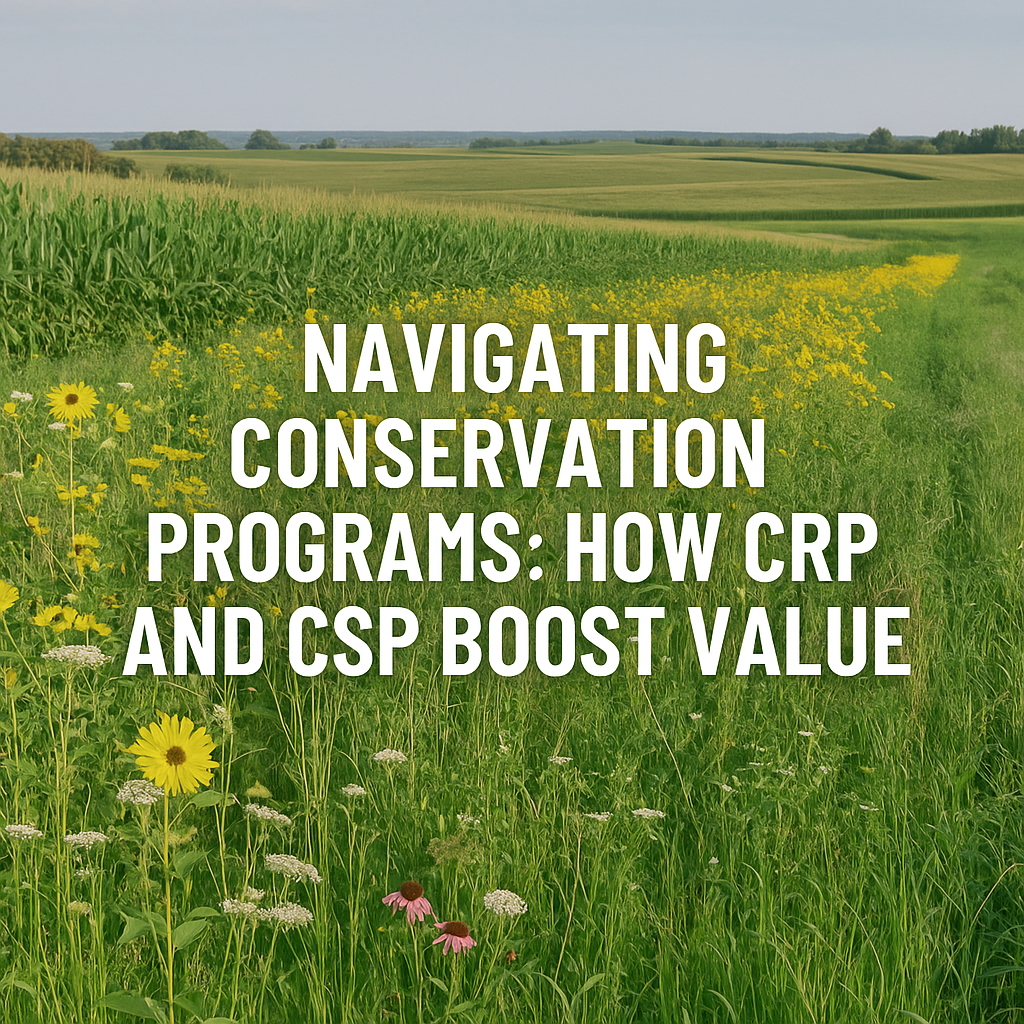When it comes to maximizing the value of Iowa farmland, many landowners immediately think about soil quality, CSR2 scores, or grain market proximity. But one often overlooked factor can significantly increase both the profitability and attractiveness of farmland: conservation programs. Programs like the Conservation Reserve Program (CRP) and the Conservation Stewardship Program (CSP) not only provide financial benefits to landowners but can also make a property more appealing to buyers who value long-term sustainability and consistent returns.
What is the Conservation Reserve Program (CRP)?
The CRP, managed by the USDA’s Farm Service Agency, pays landowners to remove environmentally sensitive land from agricultural production and plant species that improve environmental health.
What is the Conservation Stewardship Program (CSP)?
The CSP, run by the USDA’s Natural Resources Conservation Service (NRCS), is different from CRP. Instead of taking land out of production, CSP encourages farmers to improve conservation practices on working lands.
How Conservation Programs Boost Farmland Value
Considerations Before Enrolling
While CRP and CSP offer many benefits, landowners should carefully evaluate:
Whitaker Marketing Goup’s Role
At Whitaker Marketing Group, we understand the nuances of how CRP and CSP participation can increase farmland value. Whether you’re considering enrolling your land, preparing for auction, or evaluating offers, our team can help you highlight these program benefits to attract top bidders. Contact us today to learn how conservation programs can strengthen your land’s value and marketability.
515-996-5263 |✉️info@wmgauction.com